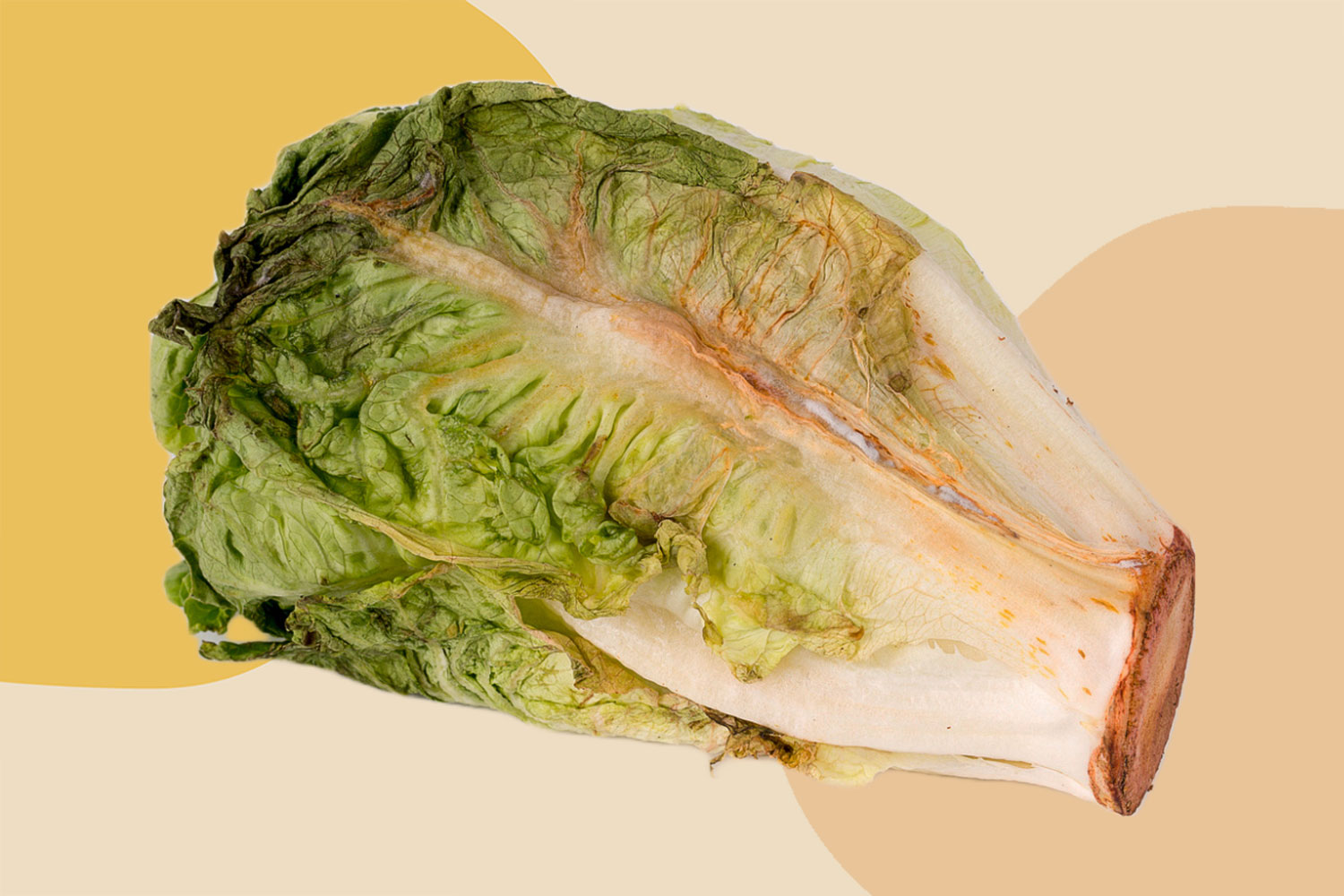Is Red Lettuce Safe to Eat? A Registered Dietitian’s Answer Might Surprise You
What's that rusty-red stuff on your lettuce—and is red lettuce safe to eat? A registered dietitian shares everything you should know.

Published
One second, your lettuce is a beautiful shade of bright green. The next, it has developed rusty-red pieces. If you've ever wondered if red lettuce is bad—or still okay to add to your lunches—you're not alone. And the answer might surprise you.
Over 70 billion pounds of food waste enter landfills every year. Once it gets there, it doesn't biodegrade. Instead, the lack of oxygen causes food scraps to sit there releasing methane, a gas 30 times more powerful than carbon dioxide. Because of that, we have to do everything we can to make our groceries last as long as possible.
Learning how to keep lettuce fresh is a great place to start (check out our guide here!), but it's also crucial to know whether a food is actually bad... or just looks a little unappetizing. Starting with lettuce that's turned a shade of red.
Why Does Lettuce Turn Red?

Whether you buy your lettuce pre-washed and bagged or grab it right from the produce section, you might have to deal with pieces that have turned a rusty red color. But why does that happen?
According to Laura M. Ali, RD, a culinary nutritionist in Pittsburgh, PA, and author of Mind Diet For Two, it turns red due to oxidation.
"You’ll see this most often with iceberg or romaine lettuce," she says. "If you use a knife to cut the lettuce instead of tearing it, this can also happen."
Here's why: When the lettuce is cut or damaged, oxygen enters its cell walls. When this happens, an enzyme is released, resulting in the lettuce turning a red color. Lettuce can also turn red when it's exposed to ethylene gas—typically from storing it alongside fruits and veggies that emit ethylene as they ripen.
Is Red Lettuce Bad? Or Is It Still Safe to Eat?

Some lettuce is naturally red or maroon-colored. However, when you see that your romaine or iceberg lettuce is starting to turn a light rusty-red color, don't toss it out. Even though it's a little unsightly, Ali assures us it's still safe to eat: "Red areas or spots on the lettuce are fine," she says. "You can certainly cut the red part off."
So, red lettuce is fine to eat—that's great news for your wallet and the planet! But how do you know when your lettuce is actually bad? Ali says to be on the lookout for black spots, slime, or an unpleasant odor.
"Lettuce should be crisp and firm. If it snaps when you break or cut it, it’s fresh and good to go—even if it has some red areas," Ali says. "If your lettuce has black spots, is slimy, or smells bad, it’s past its prime and should be tossed."
Any lettuce that goes bad can be added to your countertop compost bin to reduce the amount of waste being sent to landfills.
Can I Extend the Life of My Lettuce?

If you're looking to keep your lettuce fresh for longer, Ali recommends a couple of storage hacks.
"For whole heads of lettuce, it’s best to keep the whole head intact until you're ready to use it," she says. "Store it in the crisper or vegetable drawer in your refrigerator. Then wash it just before using it."

Veggie Saver Produce Bag
Get 15% off your order by using the code ECONEWS at checkout!
Ali says it's also key to keep your lettuce sealed in an airtight container with some paper towels. Pro tip: You can also use eco-friendly paper towel alternatives to reduce waste, like these. Or, put it in a Veggie Saver (shown above), which creates the perfect environment to keep your lettuce fresher for longer.
"Sort through the lettuce to remove off-colored pieces, then put the remaining lettuce on top of the paper towels, making sure it has room to breathe," Ali says. "Seal the container with the lid and your lettuce should last a good week or more. The paper towel will help absorb excess moisture and keep your lettuce crisp."
With this guide on how to decipher what's "good" and "bad" lettuce, you'll be able to keep perfectly-fine food scraps out of the trash.

How Sustainable Is Hailey Bieber's Buzzy Skincare Brand, Rhode?
Hailey Bieber's new skincare brand, Rhode, has officially hit the market. Are the ingredients and packaging sustainable? We found out.

Can Dogs Eat Bones? A Veterinarian's Answer May Surprise You
Many people assume bones are safe for dogs, but a veterinarian explains the dangers of giving them to your pup.

10 Sustainable Travel Must-Haves for Your Upcoming Trip
Here are some sustainable travel must-haves (and tips!) that will help you go exploring in the most planet-friendly way possible.

